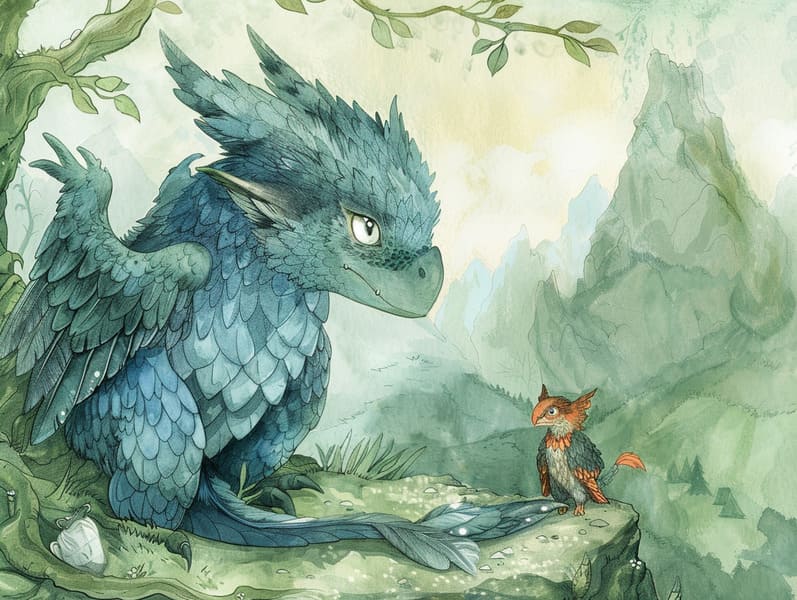
Vintage fairy tales have timeless appeal. These tales have been transmitted from one generation to the next centuries before they were ever written down. They came from a variety of traditions, including African traditions. They were initially transmitted among adults, often carrying themes and messages reflective of the societal norms and beliefs of the time.
Jacob and Wilhelm Grimm, Jacob and Wilhelm Grimm, were among the first to gather many of these beloved tales. Their published works, "Grimm's Story Collection," included stories like "Ashenputtel," "The Bread Crumb Trail," and "Little Snow White," which have since become essentials in the world of beloved fairy tales. Similarly, the Danish author's imaginative narratives, such as "The Sea Maid," and "The Duckling that Could," have won hearts worldwide, ensuring their place in the pantheon of beloved fairy tales.
Though they are centuries old, these stories remain as pertinent as ever, especially as nighttime stories for kids. These enchanting tales are now available in multiple formats, including vividly illustrated books, captivating animations, and digital fairy tales.
Their enduring popularity can be connected to several whimsical characteristics:
Important Morals: Traditional fairy tales often teach important moral lessons. Fairy tales like "The Shepherd Boy and the Wolf" teach the significance of being truthful, while "The Hare and the Tortoise" point out the benefits of persistence and humbleness. These tales offer kids clear distinctions between right and wrong, helping to shape their moral compass in a mild yet important way.
Empathy and Awareness: Fairy tales frequently illustrate beings facing struggles and tests, fostering young readers to relate with their struggles and rally behind their triumphs. For instance, "The Tale of Beauty and the Beast" illustrates the virtue of valuing inner qualities to acknowledge the inner self of a soul, enhancing understanding and recognition.
Cultural Knowledge: Many old fairy tales are steeped in the cultural contexts from which they originated. Reading these stories can provide fascinating glimpses into different beliefs, cultivating a sense of cultural insight and discernment.
Creativity and Imagination: The fantasy-filled elements in ancient fairy tales—spells and potions—provoke children’s dreams. These tales bring readers to magical realms, unleashing inventive thinking and a sense of curiosity that lasts a lifetime.
Traditional fairy tales are not only entrancing but also pedagogical. They act as entrancing tools in building various intellectual and emotional capacities in little ones. When classic fairy tales are told out loud, they enhance communication skills by teaching new words and complicated sentence structures. This practice also boosts auditory perception and mindfulness, as little ones hang on every word, anxious to see what happens next.
Furthermore, analyzing the themes and characters of timeless fairy tales can develop critical thinking and cognitive skills. Little ones are guided to recognize patterns, expect results, and make sense of cause and effect. These conversations also further young readers utter their thoughts and feelings, contributing to their emotional intelligence.
In today’s high-tech era, the accessibility of online fairy tales has made these stories more attainable than ever. Web platforms and web apps provide large libraries of traditional fairy tales that can be looked at or heard anytime, anywhere. Fairy tales read aloud are particularly well-liked, making available an delightful method for the young to enjoy these magical stories. Audio stories and voiced videos take characters and settings to life, often accompanied by entrancing background sounds and soundtracks that enrich the storytelling experience.
The everlasting appeal of traditional fairy tales lies in their ability to alter to modern times while maintaining their key morals. Contemporary updates of these tales often present more multicultural protagonists and modern settings, making them meaningful to today’s audience. However, the basic principles of valor, understanding, and justice remain unchanged, continuing to connect with young listeners of all ages.
Timeless fairy tales also offer a sense of reassurance and recognition. They make accessible a coherent narrative with a distinct beginning, middle, and end, often finishing with the culmination of conflicts and the triumph of righteousness Grimm's fairy tales collection over wickedness. This certainty can be relieving for little ones, affording a sense of solidity in an inconstant world.
Ancient fairy tales continue to bewitch and guide new generations, maintaining their elegance and importance in modern society. As children's bedtime stories, they grant access to a perfect blend of delight and instruction, promoting moral values, empathy, and creativity. The availability of online fairy tales and the popularity of fairy tales voiced ratify that these classic tales remain within reach to new generations.
By retaining and relating these stories, we continue to glorify the rich tapestry of tales and cultural heritage. Whether you are experiencing a vibrantly illustrated book, delving into a web-based collection, or listening through an voice book, the enchantment of ancient fairy tales is always within reach. These tales illustrate of the unchanging nature of fairy tales and its ability to connect us across time and space.
Whether you are seeing a artistically illustrated book, browsing a electronic library, or listening to an audiobook, the beauty of bedtime fairy tales is always within reach.
These tales show us of the immortal spell of narratives and its ability to bring us together across eras and regions, forming a connection that fascinates and enlightens alike.
Comments on “The Genesis of Historical Fairy Tales and Their Enduring Delight.”